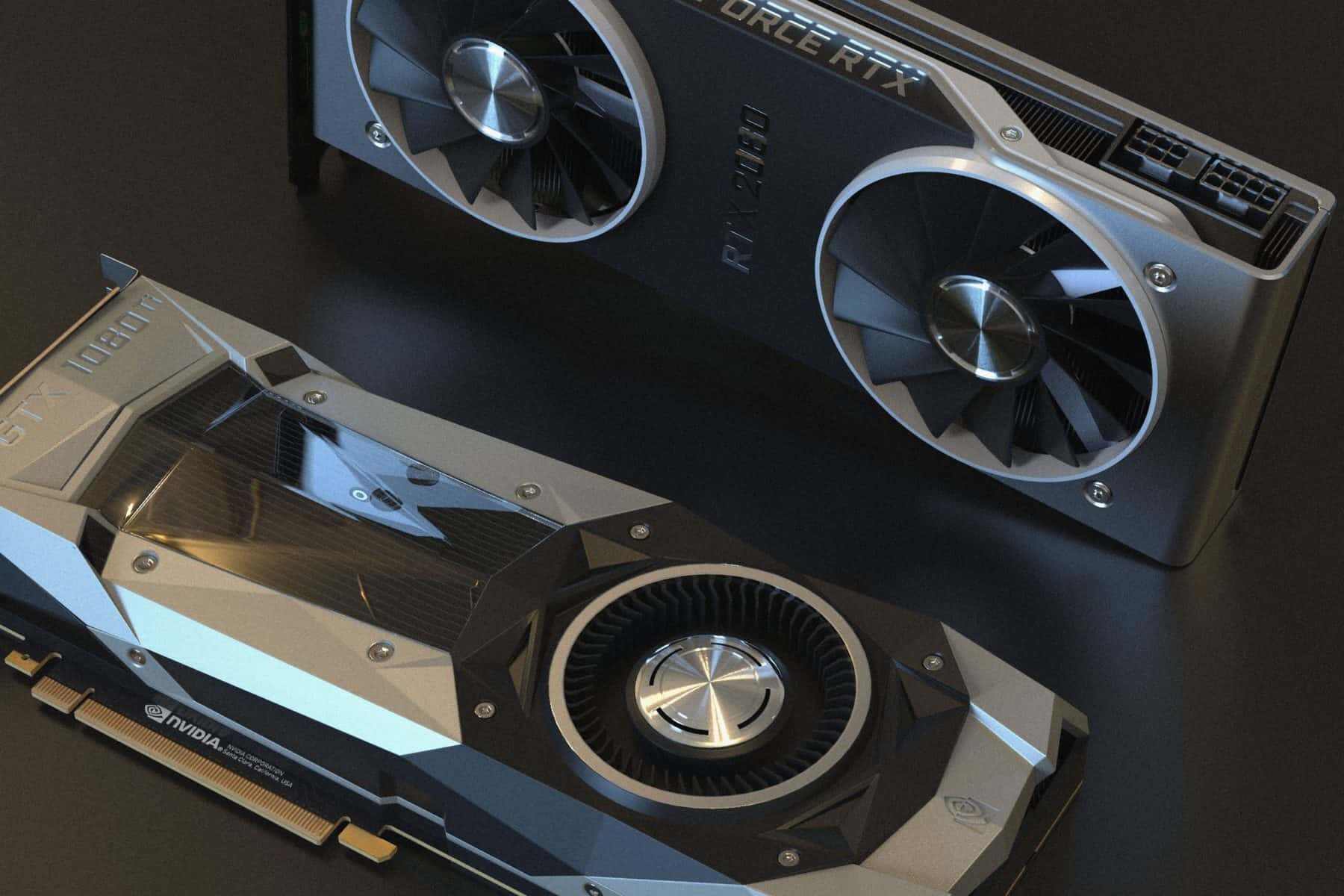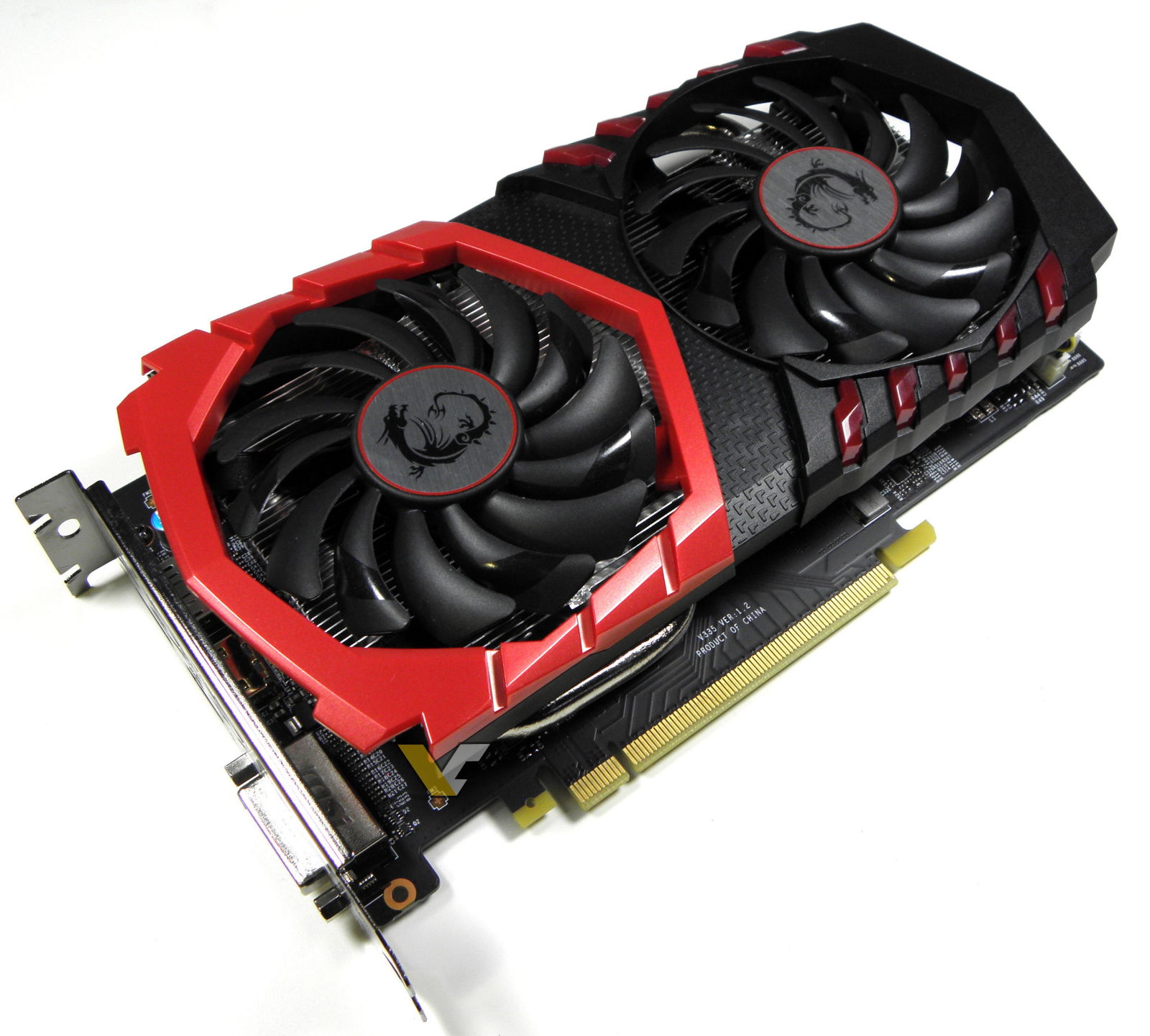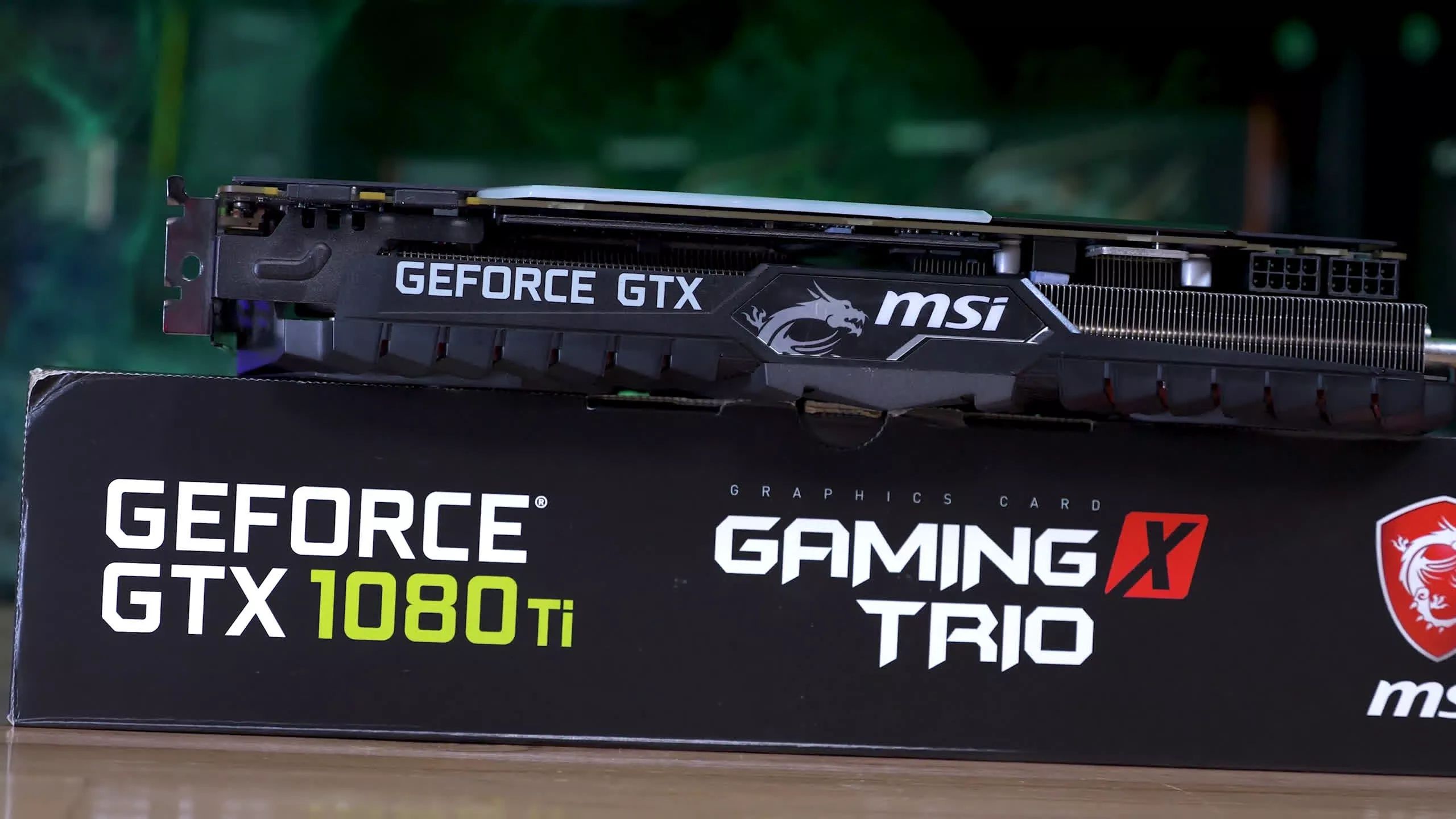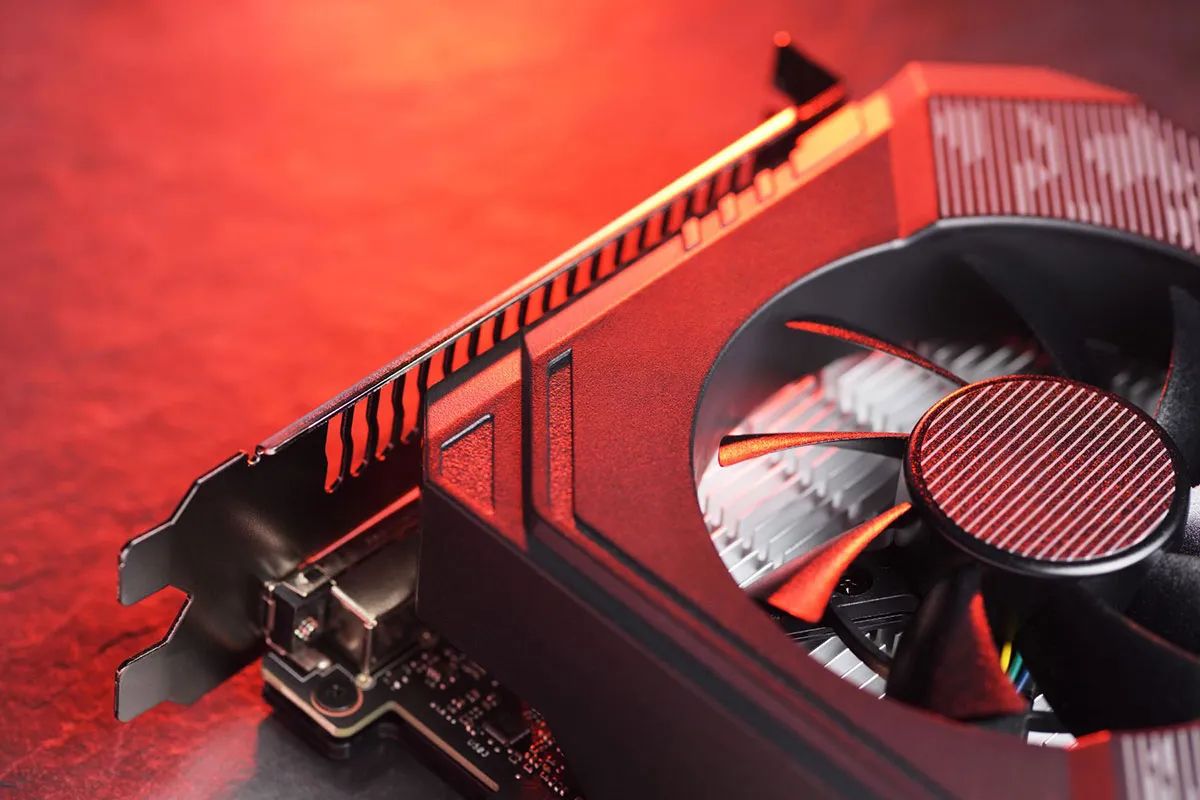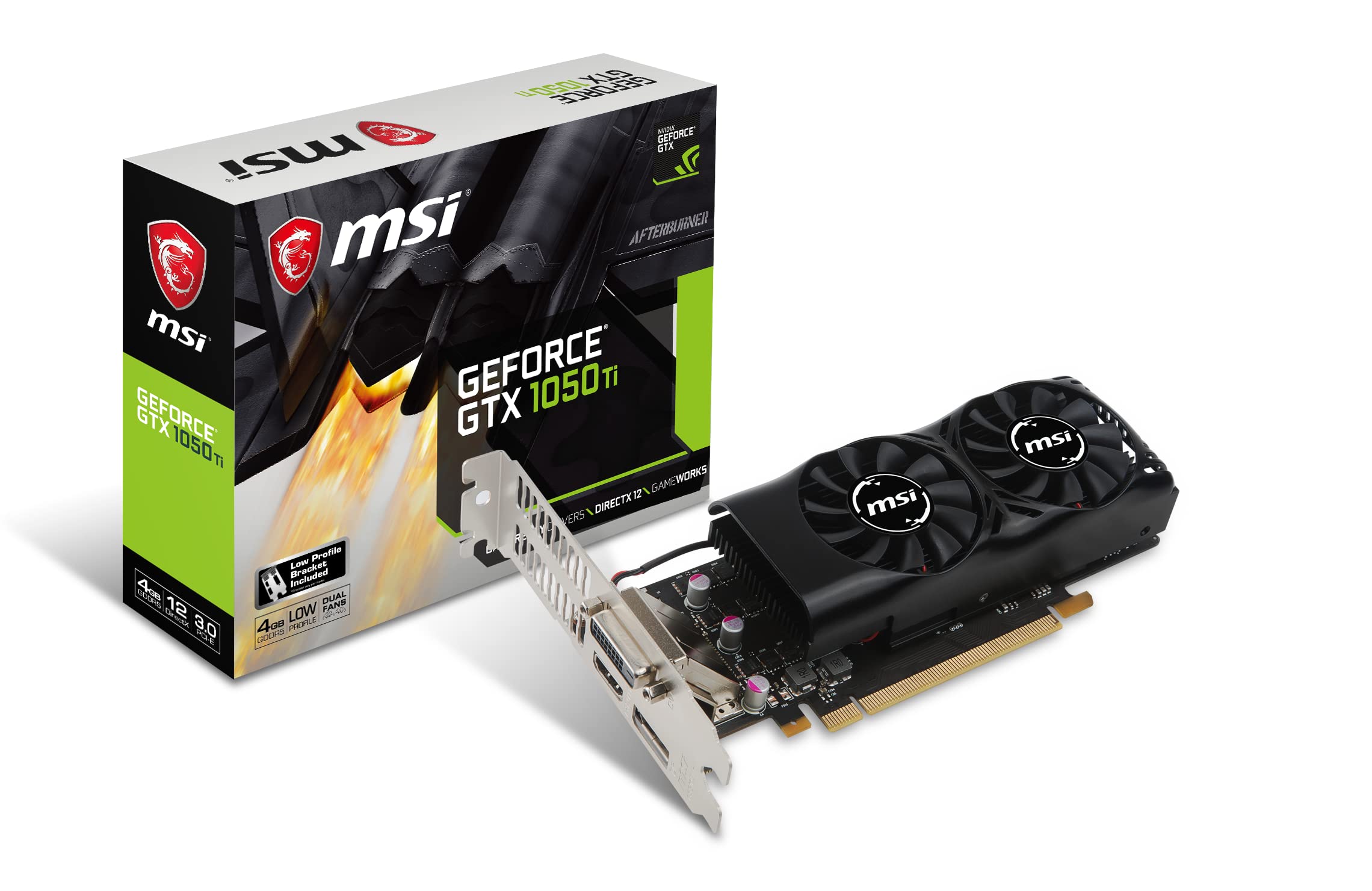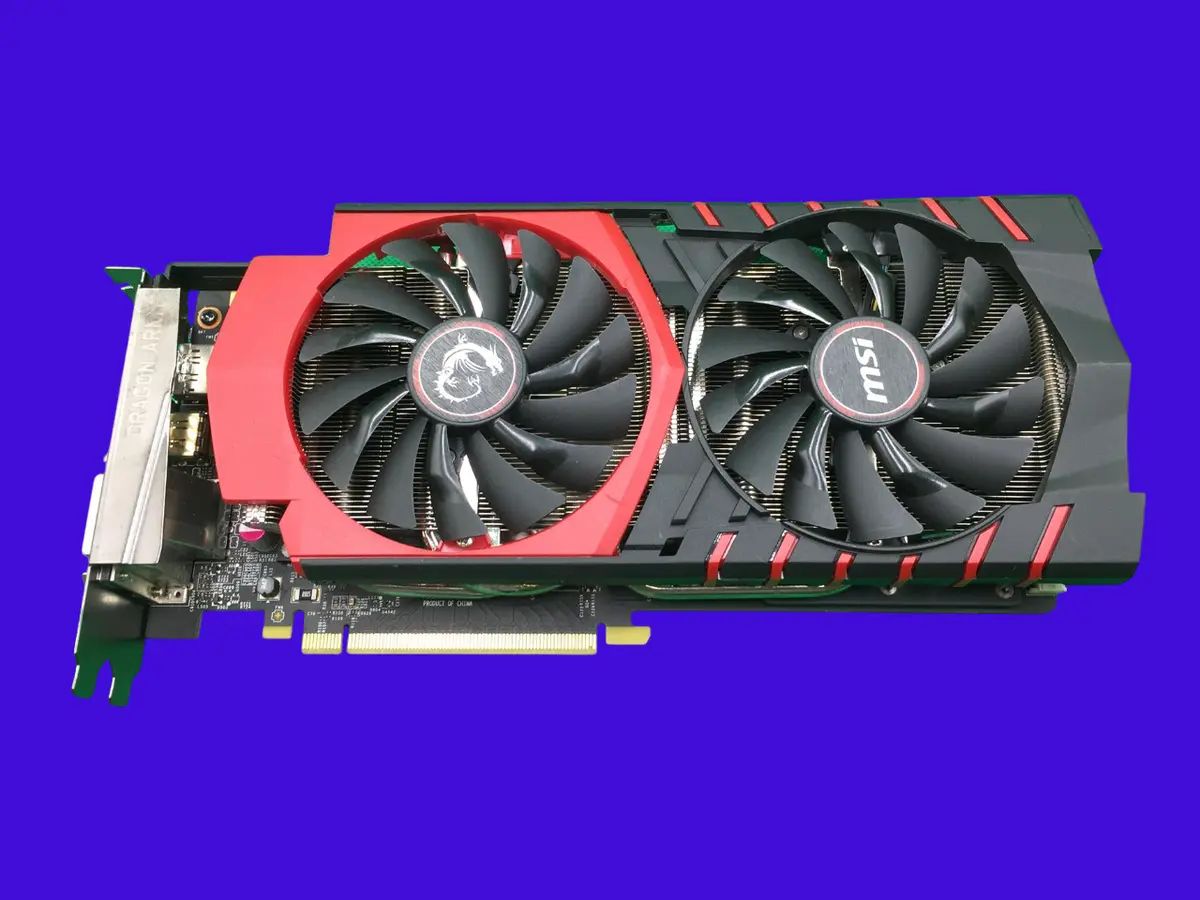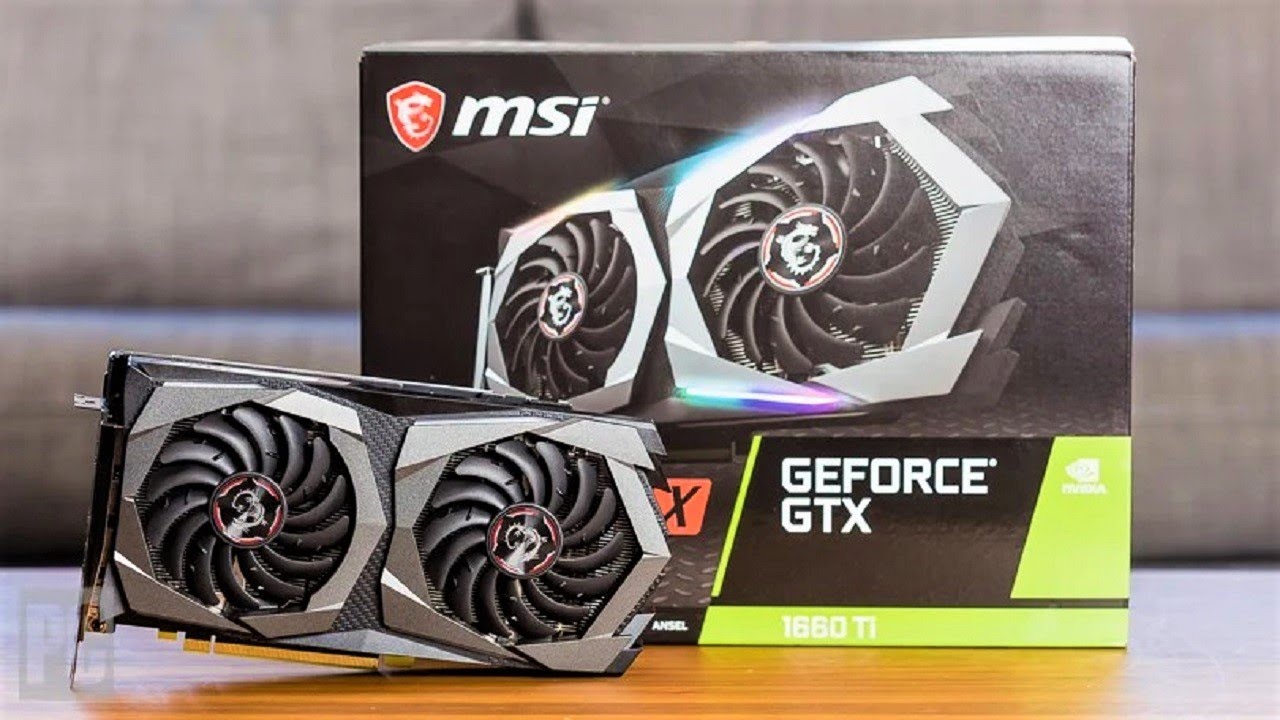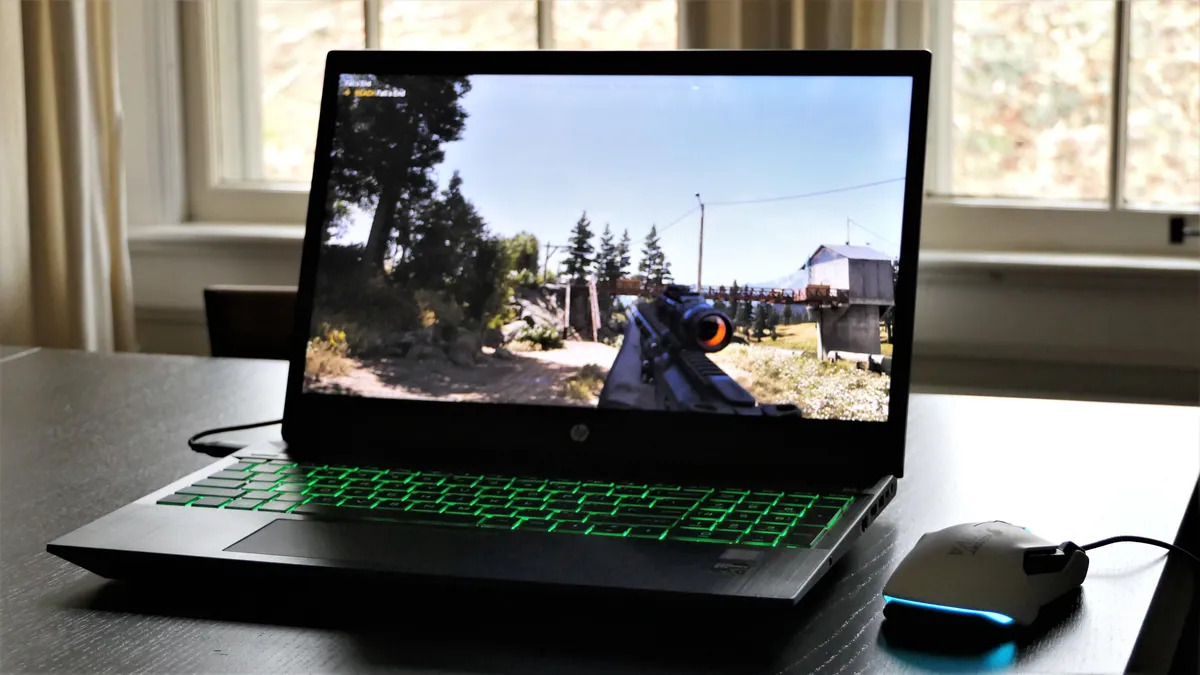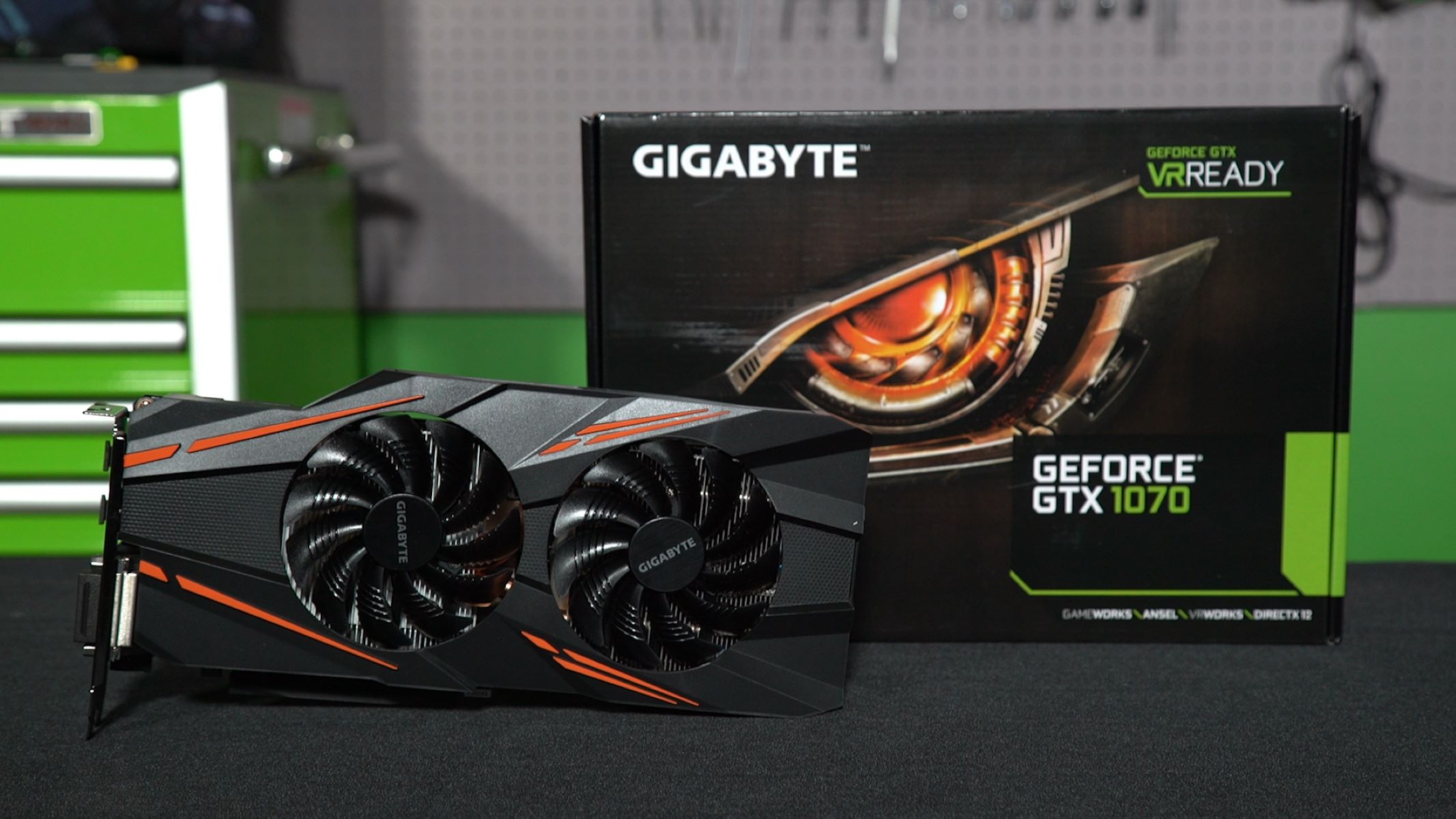Introduction
Graphics cards play a crucial role in today’s technology-driven world, powering everything from gaming and virtual reality experiences to professional design and video editing applications. If you’ve ever explored the specs of different graphics cards, you may have come across a designation called “Ti.” But what exactly does “Ti” mean on a graphics card?
To understand the significance of “Ti,” it’s necessary to have a basic understanding of graphics cards and the components that make them function optimally. Graphics cards, also known as GPU (Graphics Processing Unit), are hardware components specifically designed to handle complex graphics calculations efficiently. GPUs are responsible for rendering images, videos, and animations, providing the visual experience that we see on our monitors or VR headsets.
So, when we see “Ti” on a graphics card, what does it signify? The “Ti” label is an abbreviation for “Titanium.” In the context of graphics cards, it represents a modified or enhanced version of the standard GPU. Manufacturers use the “Ti” designation to indicate that the graphics card has been upgraded with additional features, improved performance, and higher clock speeds compared to the non-Ti variant.
The concept of using “Ti” to differentiate between different versions of graphics cards originated with NVIDIA, one of the leading manufacturers in the industry. Over the years, “Ti” has become synonymous with NVIDIA graphics cards, although AMD, another major player, uses different naming conventions for their enhanced variants.
It’s important to note that not all graphics cards have “Ti” variations. The presence of “Ti” on a graphics card model signifies that it offers superior performance and features compared to the standard version. It’s a way for manufacturers to provide an option for gamers and professionals who demand top-tier performance from their graphics card.
Understanding the Basics of Graphics Cards
Before delving further into the meaning of “Ti” on a graphics card, let’s first establish a solid foundation by understanding the basic components and functions of a graphics card.
A graphics card, or GPU, is an expansion card that connects to a computer’s motherboard and is responsible for processing and rendering visual data. It contains various essential components that work together to deliver high-quality graphics performance.
The primary component of a graphics card is the graphics processing unit (GPU), which acts as the brain of the card. The GPU is specifically designed to handle complex mathematical calculations involved in rendering 2D and 3D graphics. It consists of multiple cores, each capable of executing instructions simultaneously, allowing for parallel processing and faster rendering.
Another crucial component of a graphics card is the video memory, also known as VRAM. VRAM is a dedicated memory on the graphics card that stores the rendered frames, textures, and other graphical data. The amount of VRAM determines how much graphical data the card can store and access quickly, directly impacting the card’s performance.
In addition to the GPU and VRAM, other components like the graphics card’s cooling system, power connectors, and display connectors also play a vital role. The cooling system ensures that the GPU operates within optimal temperature ranges, preventing overheating and performance throttling. Power connectors supply the necessary power to the graphics card, while display connectors enable the card to output visuals to a monitor or other display devices.
Graphics cards support various APIs (Application Programming Interfaces) such as DirectX and OpenGL, which provide a bridge between the software and the hardware, allowing applications to utilize the card’s capabilities effectively. These APIs enable developers to create visually stunning games, virtual reality experiences, and other graphics-intensive applications.
It’s worth mentioning that the performance and capabilities of a graphics card depend on various factors like GPU architecture, clock speed, memory bandwidth, and the number of cores. As technology advances, graphics cards continue to evolve, delivering higher performance, better energy efficiency, and enhanced features to meet the growing demands of modern applications.
With a solid understanding of the basics of graphics cards, we can now explore the specific meaning and significance of “Ti” in the context of these powerful computing devices.
What is a GPU?
A GPU, or Graphics Processing Unit, is a specialized electronic circuit designed to handle the complex mathematical calculations required for rendering and displaying 2D and 3D graphics. In simple terms, it acts as the brain of a graphics card, allowing it to deliver high-performance visual experiences.
At its core, a GPU’s primary function is to process large amounts of visual data and transform it into images that can be displayed on monitors or other output devices. Unlike a CPU (Central Processing Unit), which is designed for general-purpose computing tasks, a GPU is highly optimized for parallel processing of graphics-related computations.
GPUs consist of hundreds or even thousands of small cores, each capable of executing instructions simultaneously. This parallel architecture allows GPUs to perform multiple calculations simultaneously, leading to faster rendering and better performance in graphics-intensive applications.
One of the key advancements in GPU technology is the use of specialized rendering pipelines. These pipelines consist of different stages, each with a specific task. For example, a typical GPU pipeline includes stages such as vertex processing, geometry processing, rasterization, and fragment processing. Each stage handles a specific aspect of the rendering process, such as transforming vertices, generating geometry, or applying textures and colors to fragments.
Another critical component of a GPU is its memory subsystem. A GPU has dedicated video memory (VRAM) that stores textures, shaders, and other data required for rendering graphics. The high-speed and low-latency nature of VRAM allows the GPU to quickly access and manipulate large volumes of data, further enhancing performance.
Over the years, GPUs have evolved significantly, both in terms of technology and architecture. They now feature advanced features like ray tracing, which accurately simulates the behavior of light rays in a scene, leading to more realistic graphics. GPUs also support features like hardware acceleration for video decoding and encoding, allowing for smooth playback of high-definition videos and faster video processing.
GPUs are not limited to gaming and entertainment applications. They are also widely used in scientific research, machine learning, and artificial intelligence. GPU computing has gained popularity in fields that require massive parallel processing power, such as data analysis, simulation, and deep learning.
In summary, a GPU is a specialized processing unit that enables high-performance rendering and display of 2D and 3D graphics. Its parallel architecture, rendering pipelines, and dedicated memory subsystem contribute to its ability to handle complex calculations efficiently. GPUs have become a crucial component in modern computers, delivering stunning visual experiences and driving innovation across various industries.
What is Ti on a Graphics Card?
When exploring graphics card models, you may have noticed the “Ti” designation attached to certain variants. So, what exactly does “Ti” mean on a graphics card? In the context of graphics cards, “Ti” stands for “Titanium.”
The “Ti” label on a graphics card signifies that it is an enhanced or modified version of the standard model. Graphics card manufacturers, particularly NVIDIA, use the “Ti” designation to communicate that the card offers improved performance, higher clock speeds, and additional features compared to the non-Ti variant.
The use of the term “Titanium” in the “Ti” designation implies that the graphics card is built to be stronger, faster, and more powerful, just like the durable and lightweight metal it draws inspiration from.
While NVIDIA popularized the use of “Ti” in its graphics card lineup, it’s worth noting that other manufacturers may use different naming conventions for their enhanced card variants. For example, AMD uses “XT” or “XTR” to indicate enhanced versions of their graphics cards.
When selecting a graphics card, opting for a Ti variant can offer significant advantages for gamers and professionals who demand top-tier performance. The enhanced features and higher clock speeds of Ti graphics cards can provide smoother gameplay, better frame rates, and improved performance in graphics-intensive applications.
It’s important to understand that not all graphics card models have a corresponding Ti variant. Ti models are typically released as a step-up from the base model, offering enthusiasts and power users an option to unlock even more of the card’s potential.
In addition to improved performance, Ti graphics cards often come with other enhancements such as better cooling solutions, higher power limits, and more robust power delivery systems. These improvements contribute to overall stability and allow for better overclocking potential, which can further boost performance.
However, it’s worth noting that Ti variants tend to come at a higher price point compared to their non-Ti counterparts. The enhanced performance and additional features come with a premium cost, making Ti graphics cards more appealing to enthusiasts and professionals who prioritize top-of-the-line performance.
Ultimately, the “Ti” designation on a graphics card represents an upgrade from the base model, offering improved performance, higher clock speeds, and additional features. If you’re seeking the best possible performance from your graphics card, opting for a Ti variant can provide the extra horsepower needed to tackle demanding tasks and deliver a top-tier gaming or professional experience.
The Evolution of Ti in Graphics Cards
Throughout the years, the “Ti” designation in graphics cards has seen a significant evolution, both in terms of its meaning and the advancements it represents. Let’s take a closer look at the evolution of Ti in graphics cards and how it has shaped the landscape of high-performance computing.
The concept of using “Ti” to indicate an enhanced or upgraded version of a graphics card originated with NVIDIA, one of the leading manufacturers in the industry. The first notable appearance of Ti was in the GeForce 2 Ti series, released in the early 2000s. These cards brought higher clock speeds, improved memory, and enhanced performance compared to their non-Ti counterparts.
Since then, the Ti label has become synonymous with NVIDIA’s high-performance graphics cards, signifying that the card has undergone enhancements to provide superior performance and features.
Over the years, the evolution of Ti in graphics cards has been driven by advancements in GPU technology. These advancements include increased core counts, improved transistor densities, enhanced power efficiency, and higher memory bandwidth.
Each new generation of NVIDIA graphics cards introduces a lineup of Ti variants, showcasing the latest advancements in GPU architecture. These Ti models typically offer higher clock speeds, more CUDA cores, and increased memory capacity compared to their non-Ti counterparts.
With the release of each new Ti graphics card, NVIDIA aims to provide users with even greater performance and capabilities. This includes improvements in ray-tracing technology, enhanced AI capabilities, and more efficient power consumption.
One notable example of the evolution of Ti in graphics cards is the NVIDIA GeForce RTX series. The RTX Ti variants, such as the GeForce RTX 2080 Ti, push the boundaries of graphics performance by integrating real-time ray tracing technology and AI-powered features. These cards offer a significant leap in performance compared to their non-Ti counterparts.
Another aspect of the evolution of Ti in graphics cards is the inclusion of custom cooling solutions. As Ti variants tend to deliver higher performance, they require better heat dissipation to maintain optimal operating temperatures. Manufacturers often equip Ti models with custom-designed cooling systems, featuring larger heatsinks, multiple fans, and improved airflow, ensuring stability and longevity during intense gaming or rendering sessions.
In summary, the evolution of Ti in graphics cards has been marked by advancements in GPU technology and performance. NVIDIA has consistently utilized the Ti designation to indicate enhanced versions of their graphics cards, offering higher clock speeds, improved features, and superior overall performance. This evolution continues to push the boundaries of what’s possible in high-performance computing, delivering mesmerizing visuals, realistic gaming experiences, and accelerated professional workflows.
Graphics Card Models and Ti Variants
When it comes to graphics cards, manufacturers often release different models with varying specifications to cater to a wide range of users’ needs. Within these models, you’ll often find Ti variants, which offer enhanced performance and features compared to their non-Ti counterparts. Let’s explore the relationship between graphics card models and Ti variants.
Graphics card models are typically identified by a series or family name, such as NVIDIA’s GeForce or AMD’s Radeon. Manufacturers release different models within these series to target different market segments, catering to various budgets and performance requirements.
Within a specific graphics card model, you may find various iterations or variants, each offering a different level of performance. These variants are often differentiated by factors such as clock speeds, memory capacity, and power consumption.
Among these variants, Ti is a designation used by NVIDIA to represent an enhanced or upgraded version of a specific graphics card model. The Ti variants, denoted by the “Ti” label in the card’s name, offer improved performance compared to their non-Ti counterparts.
NVIDIA’s Ti variants typically feature higher clock speeds and more CUDA cores, allowing for better graphics processing and improved overall performance. They also tend to come with increased memory capacity and bandwidth, providing better capabilities for handling graphics-intensive tasks.
For example, within the NVIDIA GeForce RTX series, you may find the base model cards, such as the GeForce RTX 2060. However, there is also a Ti variant available, such as the GeForce RTX 2060 Ti, which offers a significant performance boost over the non-Ti version.
It’s important to note that not every graphics card model has a corresponding Ti variant. Manufacturers typically release Ti variants for specific models that have the potential for enhanced performance and cater to enthusiasts and power users who demand top-of-the-line graphics capabilities.
In addition to Ti variants, you may also come across other designations for enhanced versions of graphics card models. For example, AMD uses the term “XT” or “XTR” to denote improved performance versions of their Radeon graphics cards.
When considering graphics card options, it’s important to determine your specific needs and budget. If you prioritize top-tier performance and have a higher budget, opting for a Ti variant can help ensure you’re getting the most out of your graphics card investment.
However, keep in mind that Ti variants often come at a higher price point compared to their non-Ti counterparts. It’s crucial to weigh the performance benefits against your budgetary constraints to make an informed decision.
Ultimately, the availability of Ti variants within graphics card models offers users the option to choose enhanced performance and features when seeking the best graphics processing power for their specific needs.
Performance Comparison: Ti vs Non-Ti Graphics Cards
When considering a graphics card purchase, it’s essential to understand the performance differences between Ti and non-Ti variants to make an informed decision. Let’s delve into the comparison between Ti and non-Ti graphics cards to see how they stack up against each other.
Ti variants of graphics cards are generally designed to offer superior performance compared to their non-Ti counterparts. This enhanced performance comes from a combination of factors, including higher clock speeds, increased memory bandwidth, and additional CUDA cores.
The higher clock speeds of Ti variants allow for faster processing of graphics data, resulting in better performance in games and demanding applications. This translates to smoother gameplay, higher frame rates, and more immersive visuals.
The increased memory bandwidth of Ti models enables faster data transfer between the graphics card and the system, allowing for quicker rendering of complex scenes. This can result in improved texture quality, reduced loading times, and better overall performance in graphics-intensive tasks.
Additionally, the presence of more CUDA cores in Ti variants contributes to better parallel processing capabilities. This results in faster rendering of complex scenes and improved performance in tasks such as video editing, 3D modeling, and scientific computing.
It’s important to note that the performance difference between Ti and non-Ti variants may vary depending on the specific graphics card model. In some cases, the performance gap may be more significant, while in others, it might be relatively minor.
When comparing Ti and non-Ti variants, it’s essential to consider the specific requirements of your intended use. If you’re a casual gamer or use your computer for general tasks, a non-Ti variant may be suitable, providing satisfactory performance at a more affordable price point.
On the other hand, if you’re a serious gamer, content creator, or professional requiring high-performance graphics processing, a Ti variant can deliver the extra horsepower needed for smooth gameplay or efficient rendering. It can provide a noticeable difference in performance, especially when utilizing graphics-intensive applications or pushing the boundaries of graphical fidelity in games.
It’s worth mentioning that the enhanced performance of Ti variants often comes at a higher price point compared to their non-Ti counterparts. This price difference is reflective of the enhanced capabilities and additional features offered by the Ti models.
Ultimately, the performance comparison between Ti and non-Ti graphics cards highlights that Ti variants can provide a significant performance boost for users who require top-tier graphics processing. However, users should consider their specific needs, budget, and the level of performance required before making a decision.
Overclocking and Ti Graphics Cards
For enthusiasts and power users seeking even more performance from their graphics cards, overclocking is a popular method to push the limits of hardware capabilities. When it comes to Ti graphics cards, the potential for overclocking can result in significant performance gains beyond the already enhanced specifications. Let’s explore overclocking and its impact on Ti graphics cards.
Overclocking involves increasing the clock speeds of a graphics card’s GPU and memory beyond the manufacturer’s intended specifications. By doing so, users can extract additional performance from their hardware, allowing for smoother gameplay, higher frame rates, and improved rendering speeds.
One of the advantages of Ti graphics cards is their enhanced performance right out of the box. However, their higher clock speeds and improved cooling solutions also make them prime candidates for overclocking. The additional headroom provided by Ti variants allows for greater overclocking potential compared to their non-Ti counterparts.
When overclocking a Ti graphics card, users can utilize various software tools provided by manufacturer utilities or third-party applications. These tools allow for precise adjustments to the GPU and memory clock speeds, as well as voltage settings, fan speeds, and power limits.
Overclocking a Ti graphics card can result in noticeable performance gains, improving the card’s ability to handle graphics-intensive tasks. Higher clock speeds translate to faster rendering times and increased frame rates in games, providing a smoother and more immersive gaming experience.
However, it’s important to note that overclocking does come with some risks. Pushing a graphics card beyond its intended specifications can lead to increased power consumption, higher temperatures, and potential stability issues. It’s crucial to monitor temperatures and ensure adequate cooling to prevent overheating and potential damage to the card.
Furthermore, the success of overclocking can vary from card to card, even within the same Ti model. Each graphics card has its own unique characteristics, and not all cards may be capable of achieving the same overclocking results. Factors such as the card’s silicon lottery, power delivery system, and cooling solutions can influence the maximum stable overclock achievable.
Enthusiasts engaging in overclocking should also be mindful of the warranty conditions set by the manufacturers. In some cases, overclocking can void the warranty, so it’s crucial to understand the implications and potential risks involved.
In summary, Ti graphics cards offer increased performance and overclocking potential compared to their non-Ti counterparts. Overclocking can result in significant performance improvements, empowering users to extract even more power from their Ti graphics cards. However, it’s important to exercise caution, monitor temperatures, and understand the limitations and potential risks associated with overclocking. With proper care and consideration, overclocking can unlock the full potential of a Ti graphics card and provide an enhanced experience for gamers and professionals.
Factors to Consider When Choosing a Ti Graphics Card
When selecting a Ti graphics card, there are several important factors to consider to ensure that you choose the right card for your specific needs and budget. Let’s explore these factors to help you make an informed decision.
1. Performance Requirements: Determine the level of performance you require from your graphics card. Consider the type of applications you’ll be using, such as gaming, content creation, or professional work. Assess the recommended system requirements of the software you intend to use and choose a Ti graphics card that meets or exceeds those requirements to ensure optimal performance.
2. Budget: Set a budget for your graphics card purchase. Ti variants often come with a higher price tag compared to their non-Ti counterparts due to their enhanced performance and features. Consider your budgetary constraints and find a Ti graphics card that offers the best value for your money without compromising your performance requirements.
3. Cooling Solution: Ti graphics cards tend to generate more heat due to their higher clock speeds and increased performance capabilities. Look for models that feature robust cooling solutions such as large heatsinks, multiple fans, and efficient heat dissipation methods. This will help ensure that your card remains cool under heavy loads and prevent potential performance throttling or premature wear.
4. Power Requirements: Ti graphics cards often require more power compared to non-Ti variants. Check the recommended power supply wattage and the available power connectors on your system to ensure compatibility with your chosen Ti graphics card. Avoid underpowering the card, as it can lead to instability and performance issues.
5. VRAM Capacity: Consider the VRAM capacity of the Ti graphics card. More VRAM allows for better handling of graphics-intensive tasks, higher resolution gaming, and smoother multitasking. If you plan to work with large textures or use applications that demand extensive memory, opt for a Ti variant with a higher VRAM capacity.
6. Brand and Customer Support: Research reputable brands that offer reliable products and excellent customer support. Check for warranty terms, after-sales service, and driver updates. Additionally, read reviews and user experiences to gain insights into the reliability and performance of the Ti graphics card models you’re considering.
7. Connectivity Options: Consider the available display connectors on the Ti graphics card. Ensure that it offers the necessary connections to match your display devices, whether that includes HDMI, DisplayPort, or DVI ports. This will ensure seamless connectivity and compatibility with your setup.
8. Future Upgrade Potential: Anticipate future requirements and consider the potential for future upgrades. Will your chosen Ti graphics card fulfill your needs for the next few years, or will you need to upgrade again soon? Consider the compatibility of the card with your system and the availability of newer technologies, such as PCIe Gen 4 or higher VRAM capacities, that may become important factors in the future.
By considering these factors, you can narrow down your options and choose a Ti graphics card that best suits your performance requirements and budget. Take the time to research and compare different models to ensure you make an informed decision and invest in a graphics card that will provide the best experience for your specific needs.
Conclusion
Choosing the right graphics card, especially when considering Ti variants, is a critical decision that requires careful consideration. Understanding the meaning of “Ti” on a graphics card and its significance in terms of enhanced performance and features is essential.
A Ti graphics card signifies an upgraded version of the base model, offering higher clock speeds, improved performance, and additional features. This designation, popularized by NVIDIA, has become synonymous with top-tier graphics cards that cater to enthusiasts and power users who demand superior performance.
When selecting a Ti graphics card, it’s important to assess your performance requirements, budget, and intended usage. Consider factors such as cooling solutions, power requirements, VRAM capacity, and connectivity options to ensure compatibility and optimal performance within your system.
Additionally, be mindful of the potential for overclocking with Ti graphics cards. Overclocking can provide further performance gains, but it’s crucial to monitor temperatures and understand the risks involved in pushing the card beyond its manufacturer-specified limits.
It’s also important to consider reputable brands that offer reliable products and excellent customer support. Research and read reviews to gain insights into the performance and reliability of different Ti graphics card models to make an informed decision.
Ultimately, the selection of a Ti graphics card should align with your specific needs, providing the necessary performance and features to achieve an immersive gaming experience, seamless content creation, or efficient professional workflows.
By considering the factors discussed and conducting thorough research, you can confidently choose a Ti graphics card that will deliver exceptional performance, meet your requirements, and enhance your computing experience.







